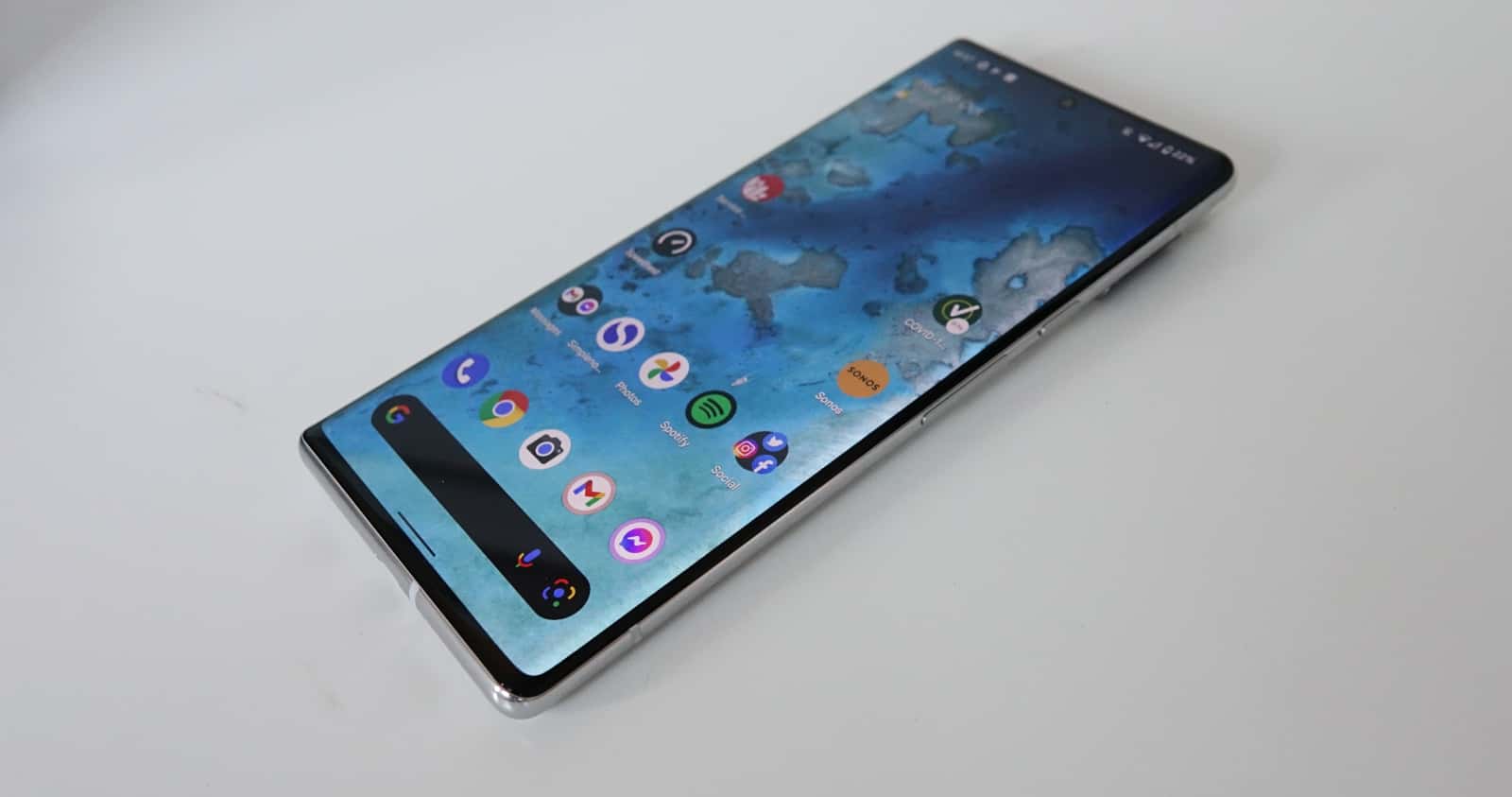Quick review
The good
The not-so-good
One of the last big phones for 2021, Google’s 6.7 inch Pixel 6 Pro makes the case that a flagship premium mobile can still come with a value price.
It’s nearly the end of the year, and Google is finally ready with its own take on what a premium phone is for 2021, all in a year where flagship have felt missing in action. There have been a few from Samsung, one from Oppo, the obvious contenders in the iPhone 13 range, and that has largely been it. Crickets, it seems, have occupied the smartphone world in Australia’s flagship bracket.
That doesn’t mean there aren’t choices, more just that there aren’t as many choices, with folks thinking of buying a super high-end phone a little limited by 2021’s choices.
Fortunately, we’re not done.
With only a couple of months until 2021 hands the reigns to 2022, Google is ready with its take on a premium phone, skipping the inexpensive “a” series in Australia this year, and offering something new, shiny, schmick, and sharp.
Packing the features and a new chip designed by Google, the Pixel 6 Pro could just be the most impressive Android all year. Is it worth considering, and if so, why?
Design
Google’s first premium Android phone in ages is a looker, that’s for sure, and one that doesn’t quite resemble any other, at least on the back.
At the front, the Pixel 6 Pro offers up a 6.7 inch display that is almost entirely all screen, save for a slim bezel that curves into the edges and is barely even there. There’s a little hint of a chin at the bottom, but it’s not much to look at, and this “all screen” device is a close to what all-screen devices should be.
It’s also easy on the eyes, pinching the edges shut in a way that makes it feel like the screen and front glass end at your fingertips, with two buttons — power and volume — just there on the right edge.
On the back, the design is unlike other phones, with an extruded bar for the cameras pushing out of a slick glass exterior, something that not only looks great, but allows the phone to lie down rather evenly, resting comfortably on a surface.
It’s a look that is decidedly all Google’s right now, and while many might rush to copy the square camera block from the iPhone, or even adopt a taller traffic light style in the Galaxy S21, Google’s cross bar camera setup is something that it gets to claim the rights to entirely.
And it looks good.
But it’s not enough to look good in the phone world. You have to have the guts to get you a great device, and the Pixel 6 Pro doesn’t disappoint, either.
Features
Google’s first flagship in a few years, you can expect a good assortment of parts here, provided you look beneath the surface.
Under that glass body, Google is equipping the Pixel 6 Pro with its own chip, the Google Tensor, paired with its Titan M2 security chip, and a good 12GB RAM, as well. Android 12 arrives on the Pixel 6 Pro out of the box, as well as your choice of either 128GB, 256GB, or 512GB storage, though the storage is locked to this amount much like it would be on an iPhone. There is no microSD card slot on the Pixel 6 Pro, so pick your storage size wisely.
You’ll find one wired port on the 6 Pro, with a USB Type C port at the bottom, while all other connections are wireless, offering 802.11a/b/g/n/ac/ax WiFi 6, Bluetooth 5.2, Ultra-Wideband, GPS, Near-Field Communication for device pairing and Google Pay, plus support for 5G, working over both the standard sub-6 technology and the less standard (at least in Australia) mmWave.
Three cameras are strapped to the back in a curious little bar, a part of the design, offering a 50 megapixel standard wide camera set to F1.85, a 12 megapixel ultra-wide set to F2.2, and a 48 megapixel F3.5 camera covering 4X optical zoom. These all support 4K video, as does the front camera, which captures shots at 11 megapixels and F2.2.
It all sits under a 6.7 inch OLED display, running the Quad HD+ resolution of 3120×1440 and offering a pixel clarity of 512 pixels per inch (512ppi). Google’s fast display technology is part of that, supporting up to 120Hz, but controlling the speed to match what you’re doing, all of which is protected by Corning’s Gorilla Glass Victus improved glass protection. And built into that screen is a fingerprint sensor, with Google’s take on fingerprint security part of the display, not in the body for a change.
The Google Pixel 6 Pro arrives in a glass body with an alloy frame, supporting IP68 water resistance, and featuring both wired (Type C) and wireless charging (Qi) with a 5003mAh battery.
In-use
Grab the phone and hold down the power button, and you’ll find the Pixel 6 Pro will spring to life with one of the fastest phone load times yet.
The button itself is stiff, surprising in and of itself, but the phone is otherwise responsive, with Android 12 looking smart and providing a personalised feel to Google’s operating system. It’ll tweak the colour and accents to your mobile experience based on what you want, and generally provides a nice look for Android overall.
A little surprising is the security, which offers just fingerprint security with an in-screen sensor, something that works, but can sometimes be a little slow.
However it does work, and lets you jump right in and start using the phone quickly.
Performance
Armed with a new style of processor, Google’s “Tensor” is a little bit different from what we’ve experienced in most phones this year, and indeed what we’ve experienced from a Pixel yet.
You see Google typically goes with the flow and outsources its chips to someone else, opting to use a Qualcomm Snapdragon in its phones, something we’re used to seeing from other brands. This year, however, Google has changed its approach, and much like how Apple designs its own A-series “Bionic” chips and Samsung designs its Exynos processors, Google has its own processor, too.
In the Pixel 6 range, the processors are called “Tensor”, named after the machine learning platform Google uses for its search engine, and which also has Tensor-chips for its servers to do some of the heavy lifting in search.
Google’s Tensor chip is still very much like any other modern day phone processor, with a CPU, GPU, and machine learning component, though in its initial stages with the version of Android 12 Google shipped reviewers, Geekbench — our benchmarking software — struggled to get through a standard bench test.
Despite this, the chip is seriously capable, with not a skerrick of lag, while also handling some of the extra tasks Google talks about with absolute ease.
Take transcribing from Google’s voice recorder app, which happens in real time and requires zero effort. You don’t need to be connected to the web to make it happen, and it even picks up on kids voices. Granted, early English from a toddler isn’t a perfect translation, but the very fact that the system can listen to various speakers and hit surprisingly close outcomes is very, very impressive.
There’s also that whole 5G thing, and while we haven’t quite managed to test the inclusion of mmWave — you know, given it’s only available in a handful of places — the fact that the Pixel 6 Pro handles both makes it properly future proof.
Granted, there’s no major use case for 5G beyond downloading things faster and better quality in video conferencing, but the very fact that the 6 Pro can work with both makes it a quality inclusion, and one that will benefit not just Australians, but anyone where 5G is rolling out around the world.
Camera
One of the areas that has got stand out is in a section that looks entirely different from any other phone out today: the camera.
Featuring three cameras in a cross bar at the back, the Pixel 6 Pro already wins points for looking totally different in a world where phones are almost entirely same-same, but this combination goes beyond mere look.
Armed with a 50 megapixel camera for daylight and nighttime standard shots, a 12 megapixel ultra-wide when you need to get a little back, and a 48 megapixel 4X when you want to get close, it’s all too easy to call the Pixel 6 Pro camera setup versatile, because that’s what it is.
The aperture settings could be better, and we’ve certainly seen others that let more light in, but armed with Google’s image processing know-how, the three cameras do an admirable job of capturing in any lighting scenario, whether it’s a beautifully sunny day or you’ve flicked the lights off and want to capture a shot of your sleeping kids.
Including a 4X telephoto lets you get close to subjects, as well, and even provides a hint of a macro mode, though it’s not quite like what Apple showed us in the iPhone 13 Pro Max.
However you can get some lovely shots, and not just from the standard camera modes.
Portrait is still bopping around, using software smarts for one of the better sets of portrait images on any phone to date. In this generation, the portrait shots are still bang on excellent, and possibly some of the best phone portrait images yet.
Meanwhile, an old favourite is also here, with a low-light stacking mode for astrophotographers letting you capture the stars and the night sky in all their glory.
Google has also added a couple of newbies you might be interested in, including a “Magic Eraser” mode that uses content aware techniques to erase and replace elements in a scene, while a “Motion” photograph focuses on a main subject and blurs the background as if capturing extreme movement.
Overall, it’s a pretty solid set of improvements for what was otherwise a good camera in last year’s model, and one we suspect owners will appreciate from day dot.
Battery
Unlike the camera, however, the battery is one area you mightn’t see remarkable improvements until a few days into using it. In fact, that first day might have you wondering why you ever considered the Pixel 6 Pro to begin with.
The first day using the Pixel 6 Pro seems to show the teething process of Google and batteries, because despite getting a big 5003mAh battery, you’ll probably need to charge it that night.
Fortunately, Android’s adaptive battery system helps it along in the days following, with 28 to 30 hours in our tests, which puts it just shy of the iPhone 13 Pro Max’s day and a half, a decent result all the same.
Like with most phones, the more you use the screen, the worse the battery life is going to be, but the result means Google’s big phone can typically handle your work day and then some, and if not, there’s probably a Type C port or wireless charging dock nearby that can help.
Value
Value is one area where the Pixel 6 Pro feels like it’s not doing too badly, appealing to the old sense of what constituted flagship pricing and not this new $2K target we’ve seen of late.
While 512GB will typically cost you above two thousand dollars, in the world of the Pixel 6 Pro, Google is charging $1599 in Australia, while the 256GB and 128GB editions are $1449 and $1299 respectively, decent pricing for a high-end phone, especially since the mid-range now kind of ends there.
In short, the Pixel 6 Pro is about the most affordable flagship smartphone, and one that doesn’t feel like it really gives much up for that price tag.
There are things that need work even for that price, but it is mostly a great combination with a solid value.
What needs work?
While the Pixel 6 Pro is easily one of the more impressive Android phones this year, a statement that’s also a sad indictment of how few top-end Android mobiles have popped up in 2021, there are things even Google needs to get right.
Take the camera, which is versatile with its three camera setup, but leaves us wanting close-ups in the way Apple has engineered it.
The problem is we’ve been spoiled by companies with close-up gimmicks. The Oppo Find X3 Pro had its microscopic camera, which is a gimmick but a neat idea, at that, while the also-large Apple iPhone 13 Pro Max — the obvious competition — has a macro mode which does a stellar job. Google’s closest comparison is in the 4X telephoto camera, which can let you get close, but doesn’t quite let you get as close, and operates differently.
There’s no real macro mode in the Pixel 6 Pro, and that’s a real shame. The camera is very good outside of this, and may end up being one of the major points of difference for photographers to choose one over the other.
Google also skipped a facial recognition mode for unlocking the camera, going instead for an in-screen fingerprint reader which isn’t always as fast as we’d like, and that’s a move that we’re not sure we understand.
Google’s experiments with bio-security have long better skewed towards fingerprints, with the rear-mounted fingerprint reader one of its most consistent decisions, something that was fast and worked really well, found in the original Pixel, skipped in the facial-security Pixel 4 XL and Pixel 4, and then brought back for last year’s Pixel 4a range and the Pixel 5.
This year, the fingerprint sensor has moved inside the screen for a more premium experience, but it’s not always quite that fast, and may take an extra quarter or half second for you to unlock your phone. It’s why phones that come with an in-screen fingerprint reader invariably also come with a facial security component, using one to unlock the phone, but the other for more security focused measures, such as checking passwords or paying for goods and services using Google Pay.
Yet in the Pixel 6 Pro, it’s just that fingerprint sensor, which can be good, but can also run a little slower, especially in a world where every second or so can count.
Granted, when the phone is already unlocked, you can pay for things pretty easily, so Google hasn’t made you run through the extra step of securing yourself for each part of the payment process, handy if you’re someone who swipes a rewards card that’s now integrated to your phone. However there were moments where we just wanted to check the phone without having to touch our finger to the screen, and in those simple glances, Google could have managed a facial login system. It would have been totally appreciated, and yet is missing in action.
Final thoughts (TLDR)
In many ways, the niggles of Google’s Pixel 6 Pro are like the teething issues of a new player for the mobile game, as it tries to sink its teeth into what makes the best phones “the best”. When you think about it, that’s almost what the Pixel 6 Pro is.
Google has been out of the flagship space for a few years now, choosing not to play against the Galaxy and iPhone for a position of the best phone you could find. Its mobiles were deliberately under the high-end $2K models out in the world, almost specifically like they were when Google unleashed the Nexus models before them. Rather than make a play for the best, Google was changing the nature of the middle, and convincing people to use its phones to get them into the system.
It might have worked. While the Pixel and Pixel 2 models were great, the “a” models since then were often similar but better, with the Pixel 3a feeling more accomplished than the Pixel 3XL it came from, the Pixel 4a delivering a solid and small take on the Pixel 4XL, and the Pixel 5 being great, but the Pixel 4a with 5G actually being pretty much the same phone minus the water resistance and wireless charging.
This year, things are different. This year, Google hasn’t made a low-end phone, and it’s a real surprise. When asked about a low-end model, Google’s Australian arm gave Pickr the typical “no comment” line, focusing instead on the high-end, which is precisely what’s being used in this phone.
In the Pixel 6 Pro, Google is returning its focus to the high-end, an area it has been out of for a while, which means there may be the odd teething issue. Like riding a bike again after what has been a really long time, it may take Google a step or two to find its rhythm, but the efforts are mostly there.
With a great premium look and feel, a versatile camera, future-proofed 5G, and a reason for existing that makes it more than just your typical phone, the Pixel 6 Pro is one of the year’s best phones. This is very much the best Android of 2021.
Is it perfect? No, and there are things Google could definitely fix, but the company’s return to the high-end is a welcome one and for definitely the right price, achieving a value argument few high-end phones manage to hit. It even signals just how strong the Pixel 7 Pro will be when the company steps forth and does that one, too, and makes us look forward to what will be coming next year.
For now, if you’re looking for the best in class Android for 2021, it may well be right here, and it won’t cost you an arm or a leg. Recommended.












